Use DFU Restore to Recover Lost iPhone Data like an iOS Tech Expert
Does your iPhone freeze, crash, or get stuck on the Apple logo? It is a frustrating experience that can make even the most advanced device feel useless. While a simple restart or factory reset might solve minor glitches, some issues run deeper and need a stronger solution. That is where a DFU restore comes in. Short for Device Firmware Update, this process completely wipes your device and reinstalls the software and firmware, making it one of the most effective ways to fix stubborn iOS problems. In this article, we will walk you through what a DFU restore is, when to use it, and how to do it safely.

In this article:
Part 1: What Is DFU Mode?
DFU stands for Device Firmware Update. It is a special mode on Apple devices that lets your iPhone, iPad, or iPod touch connect with iTunes or Finder without loading the operating system or boot loader. In simple terms, DFU mode allows your computer to talk directly to your device's hardware. This makes it useful when you need to do a deep restore, install a clean version of iOS, or troubleshoot serious software problems.
Unlike Recovery Mode, which still uses parts of your current iOS system, DFU mode bypasses it completely. This makes it ideal for fixing issues like failed updates, unresponsive devices, or software bugs that will not go away with standard methods. It is a powerful tool best used with caution, since it erases everything on the device and starts from scratch.
Part 2: Easiest Way to Recover Data from DFU Mode
If your device gets stuck in DFU mode, you may feel like all your vital information is in danger. The truth is, everything gets wiped clean once you DFU restore your iPhone. Just because you delete data from DFU does not necessarily mean it is lost forever. Sometimes, even if you have not backed it up, a good tool can allow you to recover your data.
That is where imyPass iPhone Data Recovery comes in. This robust software makes it easy to recover lost data after a DFU restore iPhone session. Whether you accidentally erased your files or faced a serious system crash, this tool gives you a smooth path to get your data back. You can perform a full scan in one click, preview everything it finds, and choose only what you need through selective recovery. It is a smart, user-friendly way to bring back files, recover deleted photos, messages, contacts, and more, even without backup. With imyPass, you do not have to worry about losing what matters most.
Click the download button here to successfully download the app and use it to restore all your deleted files when DFU is activated. Then, follow the installation process on your PC and open the app.
While the app runs, click the Recover from iOS Device on your interface. Then, connect your iOS device and click Trust to establish a connection to your PC. After that, click Start Scan.
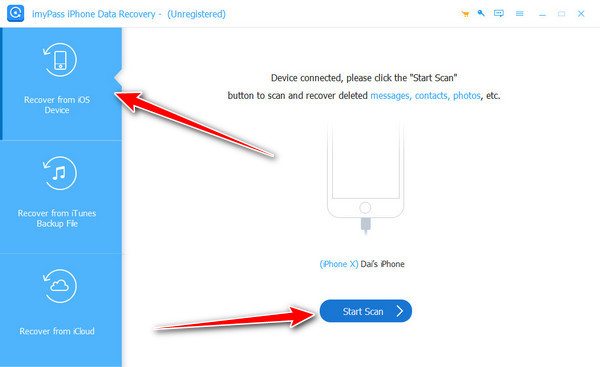
When that is done, you will see all the files that can be recovered on your phone. Select all the files you want by clicking on them and clicking Recover to proceed to the next process.
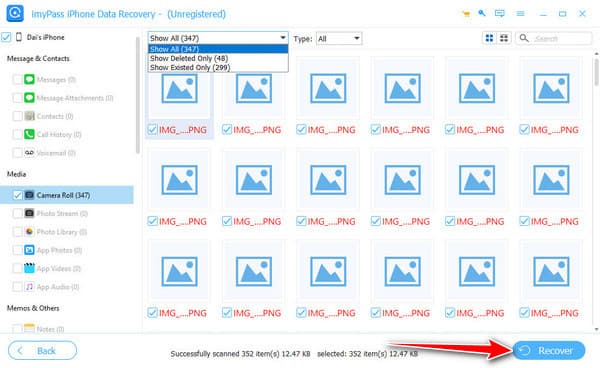
A new window will arise on your screen. In it, you need to set the location of your files and click Open. Wait for a few seconds until it is done.
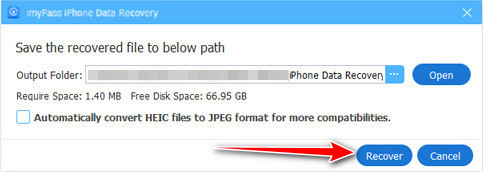
Part 3: Recover Data from iPhone in DFU Mode via iTunes
Keep reading if you have placed your device into DFU mode and want to recover your data. In such situations, you can depend on iTunes if you have first made a backup. The iTunes restore function gets your files back following a deep restore. Learning how to DFU restore iPhone is only part of the process; getting your data back is just as important, and that is where iTunes can help.
Link your iPhone to your computer with a Lightning cable and ensure you use the updated version.
Once it opens, click the device icon on the top bar to access your iPhone settings. This will take you to the Summary tab.
On the Summary page, scroll to the Backups section. Under Manually Back Up and Restore, you will see two buttons. Click Restore Backup to begin recovering your lost data from a previous backup. This will allow you to maximize the iTunes recovery software it offers.
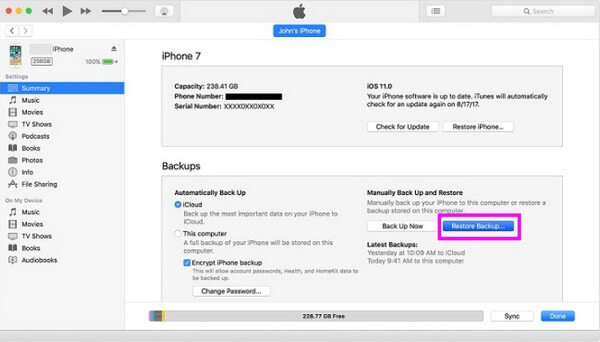
Once the restore begins, wait for it to complete without disconnecting your device. Afterward, your iPhone will reboot with the recovered data in place. If you backed up your files beforehand, iTunes offers a smooth and reliable way to recover data from DFU mode and get your iPhone back to normal without losing what matters most.
Part 4: Recover Data from iPhone in DFU Mode via iCloud
If you want a hassle-free way to recover data from an iPhone in DFU mode, iCloud is a great option, especially if you backed up your device beforehand. After performing a DFU restore, you can use your iCloud account to bring back everything wirelessly, without needing a computer or extra tools. This process is excellent for users who regularly sync their iPhones with iCloud and want to restore data quickly after a deep reset.
Once the DFU restore is complete and your iPhone restarts, begin the setup process. When you reach the Apps & Data screen, tap Restore from iCloud Backup. Sign in using your Apple ID to verify access to your backups.
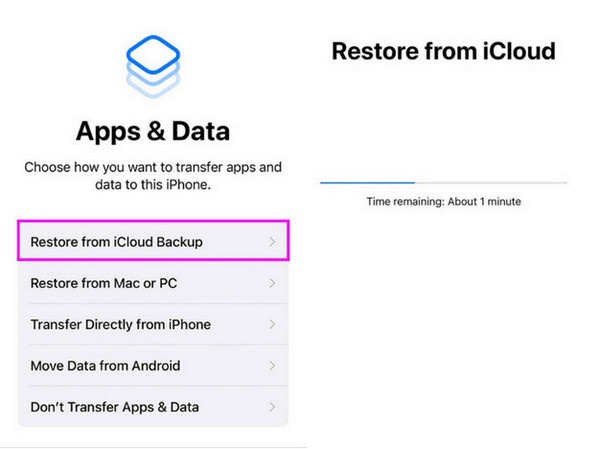
From the recovery list, select the backup that contains your desired data. Always select the newest and most suitable backup for your needs.
Depending on the size of your internet, it may take a while. Once it's done, your files, apps, and settings will return to your iPhone.
As long as you have a recent backup, iCloud offers one of the easiest and most convenient ways to recover data from DFU mode. There are no cables, no computers, and just a few taps to get everything back.
Conclusion
It can be very disappointing to find your iPhone in DFU mode and believe you have lost your important files forever. However, it is possible to recover data from DFU mode using the right tools and methods. You can recover your data using any method, from reliable data recovery tools to relying on backups you have made with iTunes or iCloud. Make sure to take fast action and use the right kind of response for your problem. Saving your files and settings becomes less stressful with these solutions.
Hot Solutions
-
Recover Data
- Recover WhatsApp View Once Photo
- Recover Deleted TikTok Videos on Mobile
- Recover Deleted Facebook Photo
- Recover Viber Messages, Photos, etc.
- Recover Deleted Snapchat Photos
- 5 Best Contact Recovery Apps
- Recover Deleted Discord Messages
- AppGeeker iOS Data Recovery Review
- Recover Data from DFU Mode
- Cannot Restore iPhone Backup
-
Unlock iOS
-
iOS Tips
-
Password Tips

